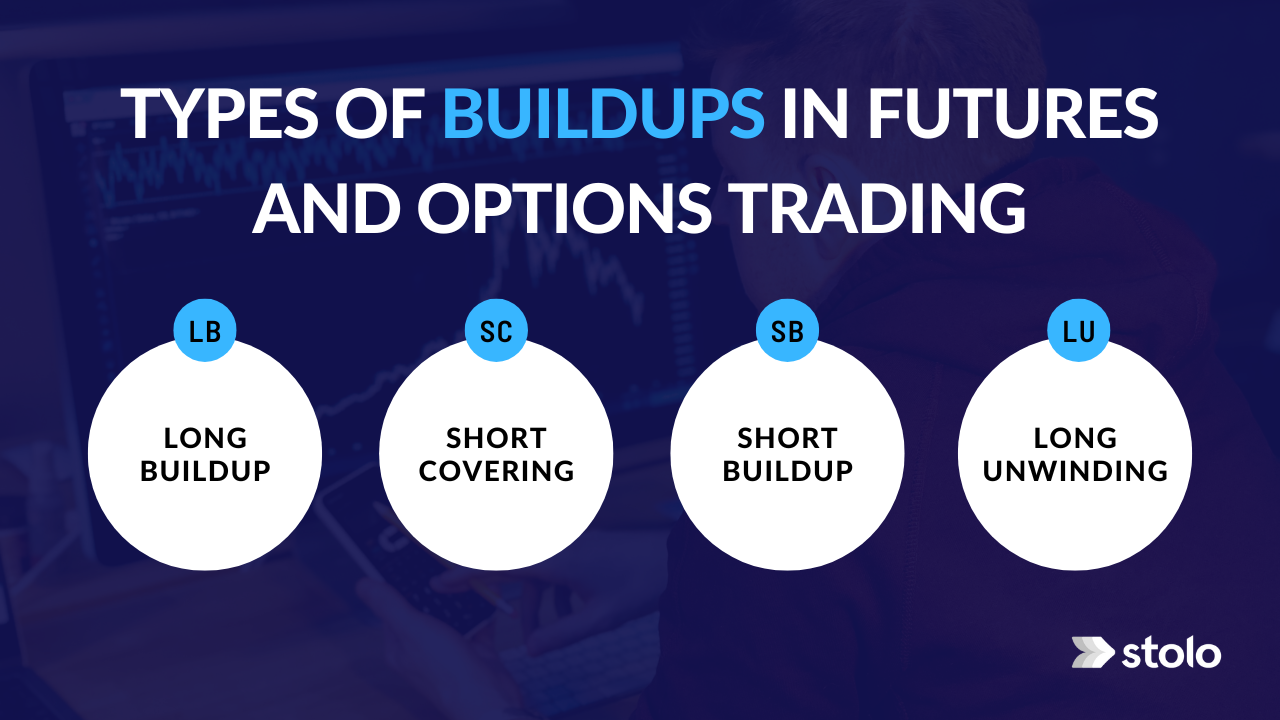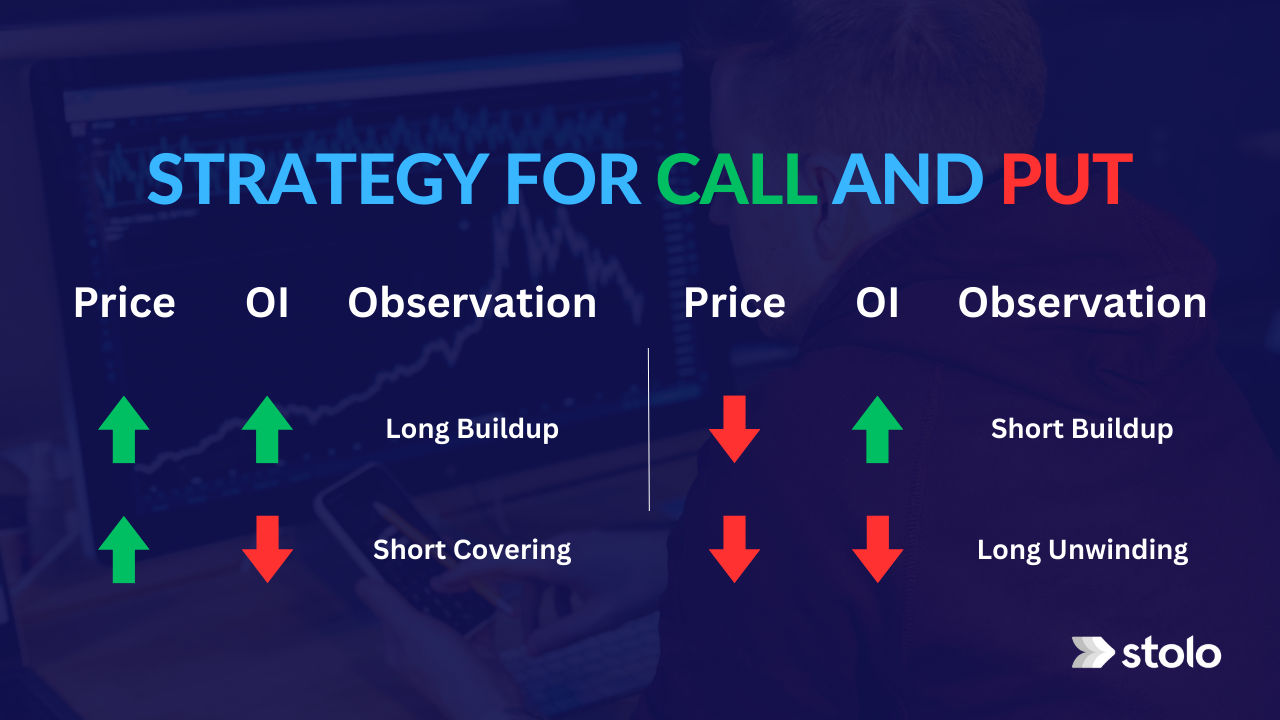What is Build-up in Futures and Options Trading?
Understanding the mechanics of stock fluctuations is critical for traders and investors in financial markets. Buildup is one of the most important concepts to understand in futures and options (FNO) trading. The buildup is the growth or decrease of a particular stock or asset class holdings. This blog will look at the many aspects of buildup and how they may provide insights into the market mood and possible trading opportunities.
Types of Buildups in Futures and Options Trading
The 4 types of buildups in futures options trading include:

Long Buildup (LB)
Long Buildup (LB) happens when a significant increase in open interest for a particular stock’s futures contracts gets paired with a price increase. This shows that traders aggressively take long bets in anticipation of a future price increase. Traders frequently look for protracted building patterns to signify a future rise. Long buildups indicate strong sentiment and may suggest additional upward potential in the stock.
Short Covering (SC)
Short Covering (SC) occurs when traders with open short positions hurry to unwind them by purchasing futures contracts. It often occurs when there is favourable news or a quick price increase in the stock, resulting in losses for short sellers. The rush to cover short bets by purchasing back shares adds to the stock price’s upward pressure. The short covering may cause rapid price jumps, and traders seek opportunities to capitalise on the momentum.
Short Buildup (SB)
A Short Buildup (SB) is a rise in open interest and a decrease in the stock price. This indicates that traders aggressively take short bets in anticipation of a price decline. Short Buildup signals negative sentiment and might be a precursor to a probable drop. When traders notice short buildup patterns, they may consider short-selling or purchasing put options.
Long Unwinding (LU)
Long Unwinding (LU) happens when traders begin to close their existing long bets in the futures contracts of a stock. It is frequently followed by a drop in open interest and a stock price dip. Profit booking or a shift in market sentiment can both cause long unwinding. It suggests a possible deterioration in bullish sentiment and may signify a corrective phase or a trend reversal. Traders frequently watch extended unwinding patterns to determine potential exit locations for long holdings.

Conclusion
Understanding the different types of Buildups in FNO stocks may give valuable insights into market sentiment and help traders make better decisions. Short covering causes price increases as short-sellers hurry to cover their holdings, indicating positive sentiment and possible upside. Short buildup indicates negative sentiment and potential downward movement, whilst long unwinding indicates a warning of positive optimism. Traders can spot prospective trading opportunities and manage their positions by carefully examining these building patterns. However, one can utilise buildup indicators with other technical and fundamental research tools for a thorough trading strategy. Explore different types of Buildups in FNO Trading with Stolo Options Trading Platform

